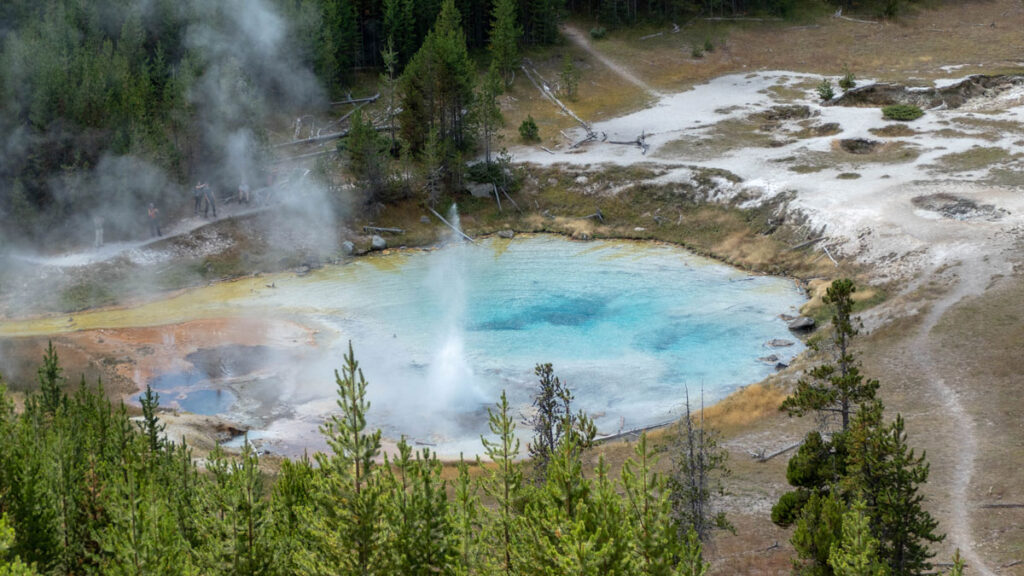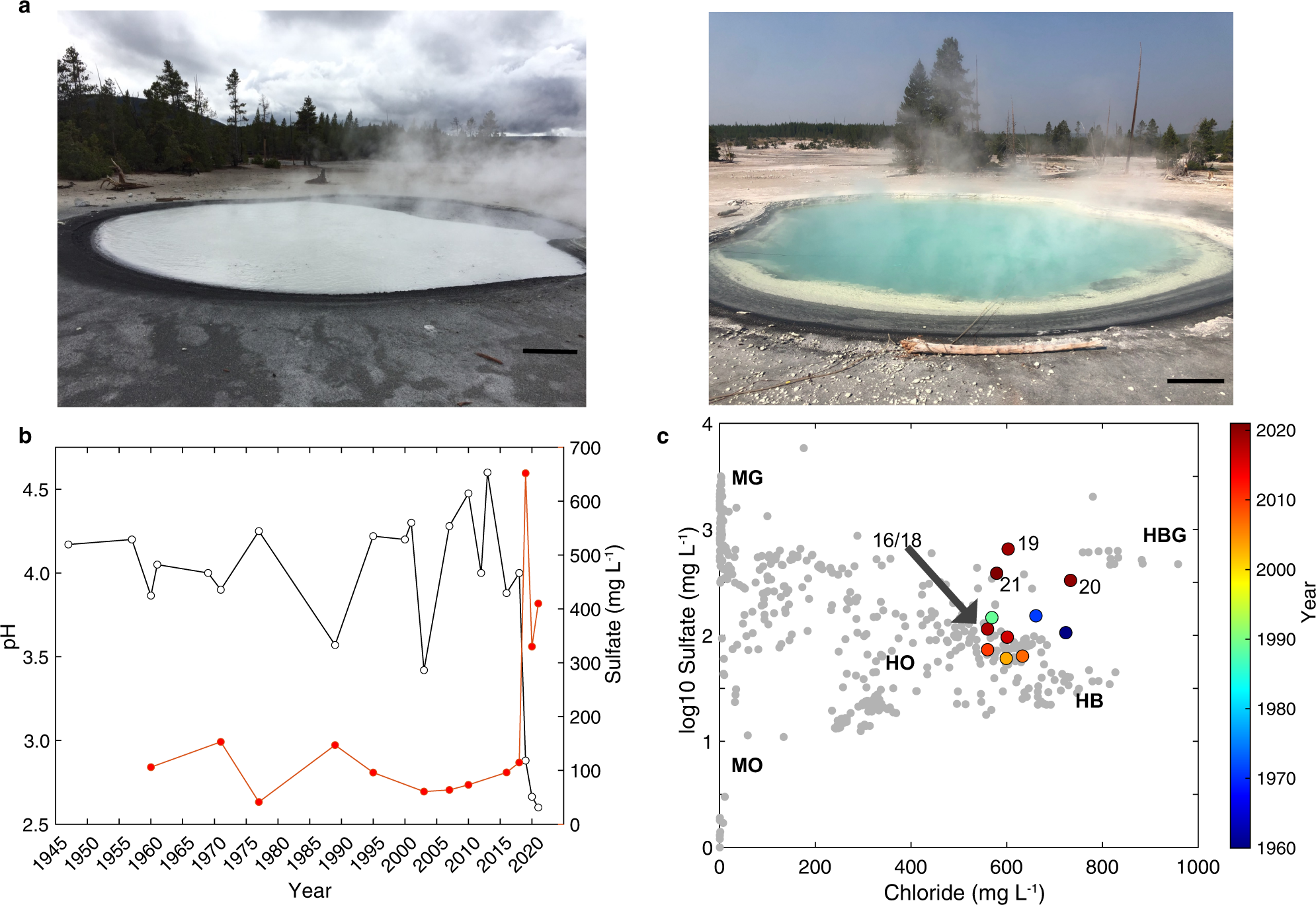Hot springs are not just a relaxing retreat for humans; they also play a significant role in shaping the local biodiversity. These unique natural wonders, with their geothermal heat and mineral-rich waters, create a thriving ecosystem where a variety of plants and animals can flourish. From microorganisms that thrive in the extreme conditions to rare species that have adapted to these hot and mineral-heavy environments, hot springs have a remarkable impact on the diversity and abundance of life forms. In this article, we will explore the fascinating ways in which hot springs influence the local biodiversity and contribute to the overall ecological balance.
Importance of Hot Springs
Hot springs are not only fascinating geological features, but they also play a crucial role in the natural world. These unique ecosystems provide a habitat for specialized organisms that have adapted to survive in the extreme conditions that hot springs offer. The importance of hot springs cannot be overstated, as they support a variety of life forms and contribute to the overall biodiversity of an area.
Unique ecosystems
Hot springs create a distinct and specialized environment that is unlike any other. The extreme temperatures, fluctuating chemistry, and high mineral content create a challenging habitat for organisms to thrive. Despite these harsh conditions, a diverse range of organisms have managed to adapt and survive in hot springs, making them their home.
Habitat for specialized organisms
Hot springs are home to many specialized organisms that have developed unique adaptations to survive in these extreme environments. These organisms, known as extremophiles, include thermophilic bacteria, archaea, algae, and various invertebrates. In order to survive in the scorching temperatures of hot springs, these organisms have evolved heat-resistant enzymes and protective cell structures that allow them to thrive in this otherwise uninhabitable habitat.
Geothermal Energy and Its Impact
Hot springs are not only important for the biodiversity they support, but also for their potential as a renewable energy source. Geothermal energy, which harnesses the heat generated by hot springs, has gained attention as an environmentally friendly alternative to fossil fuels. However, the extraction of geothermal energy can have some impact on the temperature and chemistry of the hot springs.
Energy source
Geothermal energy harnesses the natural heat energy generated by hot springs to produce electricity. By utilizing this renewable source of energy, we can reduce our dependence on non-renewable resources and reduce carbon emissions. Furthermore, the use of geothermal energy has the potential to create jobs and stimulate economic growth in areas rich in hot springs.
Effects on temperature and chemistry
Although geothermal energy provides many benefits, its extraction can have some impact on the temperature and chemistry of hot springs. The process of extracting geothermal energy involves drilling deep into the earth’s crust to reach the hot water reservoirs. This drilling can potentially reduce the flow of water in the hot springs, leading to a decrease in temperature and alteration of the mineral content. It is important to carefully manage geothermal energy extraction to minimize these impacts and preserve the unique ecosystems of hot springs.
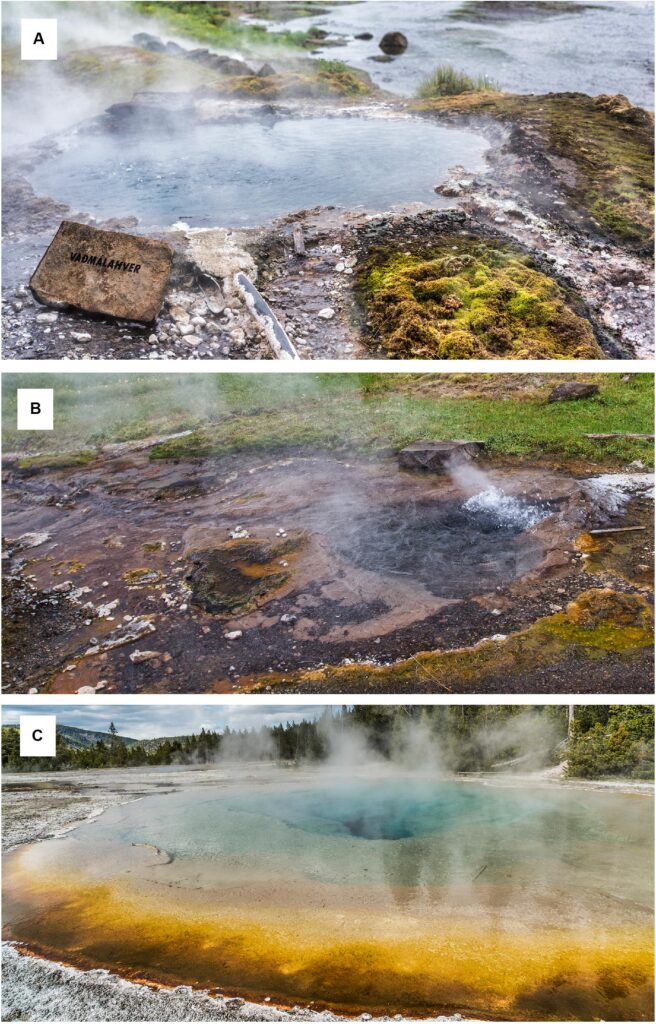
Physical Characteristics of Hot Springs
To fully understand the importance of hot springs, it is vital to examine their physical characteristics and how they contribute to their biodiversity and ecological significance.
Temperature
Temperature is arguably the most defining characteristic of hot springs. These natural wonders are typically characterized by their high temperatures, which are a result of geothermal heating. The water in hot springs can reach incredibly high temperatures, ranging from boiling hot to comfortably warm. The extreme heat creates a challenging environment for most organisms but provides a niche for thermophilic organisms that have adapted to survive in these conditions.
Mineral content
One of the distinguishing features of hot springs is their high mineral content. As the water flows through the surrounding rocks, it picks up various minerals and deposits them in the hot springs. This high mineral content not only contributes to the unique chemistry of hot springs but also provides essential nutrients for the organisms that inhabit these ecosystems.
Flow rate
The flow rate of hot springs refers to the volume of water that emerges from them over a given period of time. The flow rate can vary significantly depending on the geology and hydrology of the area. The flow rate of hot springs directly impacts the temperature and mineral content of the water. A higher flow rate can result in a more diluted mineral content, while a lower flow rate may lead to a higher concentration of minerals.
Biotic Interactions in Hot Springs
Hot springs create a dynamic and complex ecosystem where various organisms interact with each other for resources and survival. These biotic interactions play a crucial role in shaping the hot spring communities and contributing to their overall biodiversity.
Competition for resources
Competition for resources, such as food and space, is a fundamental aspect of hot spring ecosystems. With limited resources available in these extreme environments, organisms must compete for survival. This competition can drive adaptations and evolutionary processes, as organisms strive to outcompete each other for vital resources. The competition for resources within hot springs contributes to the diversity and complexity of these ecosystems.
Symbiotic relationships
While competition is an important factor in hot springs, symbiotic relationships also play a significant role in shaping these ecosystems. Symbiosis refers to the mutually beneficial interaction between two or more organisms. In hot springs, symbiotic relationships can be observed between various organisms, such as bacteria and archaea, algae and invertebrates, or even between different species of invertebrates. These symbiotic relationships allow organisms to thrive in harsh conditions by providing mutual support and benefits, such as protection, nutrient exchange, or waste removal.
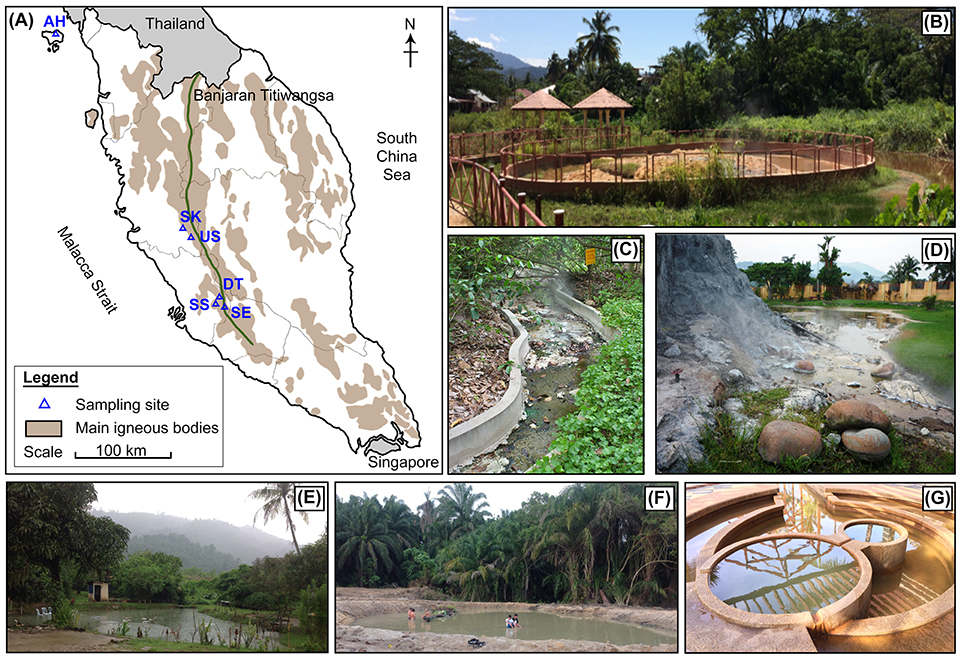
Hot Springs as Refugia
Hot springs serve as important refugia, providing protection against external factors that could harm or disrupt ecosystems. These unique habitats offer a sanctuary for various organisms, particularly those that are threatened or endangered.
Protection from external factors
Hot springs create a stable and protected environment that shields organisms from extreme weather conditions, such as droughts or freezing temperatures. The constant flow of warm water and the insulating effect of the surrounding rocks create a microclimate that allows organisms to survive and thrive when conditions outside the hot springs are challenging.
Survival of threatened species
Due to their unique conditions and relative isolation, hot springs often support populations of species that are rare, threatened, or endangered. These isolated populations can act as important genetic reservoirs, maintaining the genetic diversity of these species. By providing a safe haven, hot springs contribute to the conservation and preservation of species that may be struggling to survive in other habitats.
Hot Springs and Microbial Life
Microbial life in hot springs is incredibly diverse and plays a fundamental role in shaping these ecosystems. The extreme conditions found in hot springs provide a niche for unique and highly specialized microorganisms.
Extremophile organisms
Hot springs are home to a wide array of extremophile organisms, including thermophilic bacteria and archaea. These microorganisms have adapted to thrive in the extreme temperatures of hot springs, some even exceeding the boiling point of water. They have evolved unique enzymes and cellular structures that allow them to function in these extreme conditions. The study of extremophile organisms in hot springs has provided valuable insights into the limits of life on Earth and the potential for life in other extreme environments.
Thermophilic bacteria
One of the most fascinating groups of microorganisms found in hot springs is thermophilic bacteria. These bacteria thrive in high-temperature environments and play a critical role in the ecology of hot springs. They contribute to nutrient cycling, help in the breakdown of organic matter, and can even influence the mineral deposition in hot springs. The study of thermophilic bacteria in hot springs has significant implications for understanding microbial communities, biogeochemical cycles, and the potential for biotechnological applications.
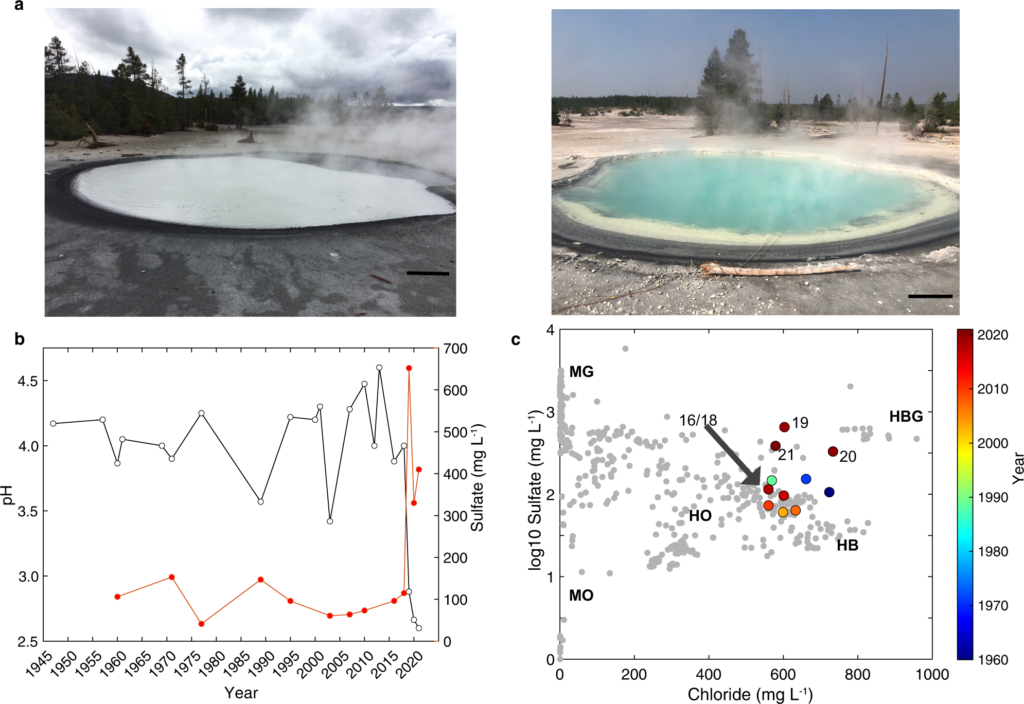
Endemic Species in Hot Springs
Hot springs have a unique assemblage of species, some of which are found nowhere else on Earth. These endemic species have evolved specific adaptations to survive in the extreme conditions of hot springs.
Adaptations for extreme conditions
Endemic species in hot springs exhibit a range of adaptations that allow them to thrive in these extreme environments. These adaptations can include heat-resistant enzymes, protective coatings or structures, and specialized mechanisms to deal with high mineral content or fluctuating temperatures. These unique adaptations are essential for the survival of endemic species and highlight the remarkable biodiversity that hot springs can support.
Restricted distribution
Many endemic species in hot springs have restricted distributions, meaning they are found only in specific hot spring habitats. The isolation of these populations can pose challenges for their conservation and highlights the vulnerability of these unique species. Protecting hot springs and their endemic species is crucial to maintaining the biodiversity and ecological integrity of these delicate ecosystems.
Ecosystem Services of Hot Springs
In addition to their ecological significance, hot springs also provide important ecosystem services that benefit surrounding environments and human communities.
Nutrient cycling
Hot springs contribute to nutrient cycling in their surrounding environments. The high mineral content of the hot spring water enriches the surrounding soils with essential nutrients. This nutrient cycling supports the growth of vegetation and provides a fertile environment for plants, creating a ripple effect throughout the ecosystem. Additionally, the microbial activity in hot springs further enhances nutrient cycling by breaking down organic matter and releasing nutrients into the ecosystem.
Water filtration
Hot springs serve as natural filters, helping purify and cleanse the water that flows through them. The high temperatures and mineral-rich water of hot springs can kill or inhibit the growth of certain bacteria and pathogens, reducing the risk of contamination in downstream water sources. This natural water filtration process is important for maintaining the health and quality of water resources, benefiting both human communities and aquatic ecosystems.
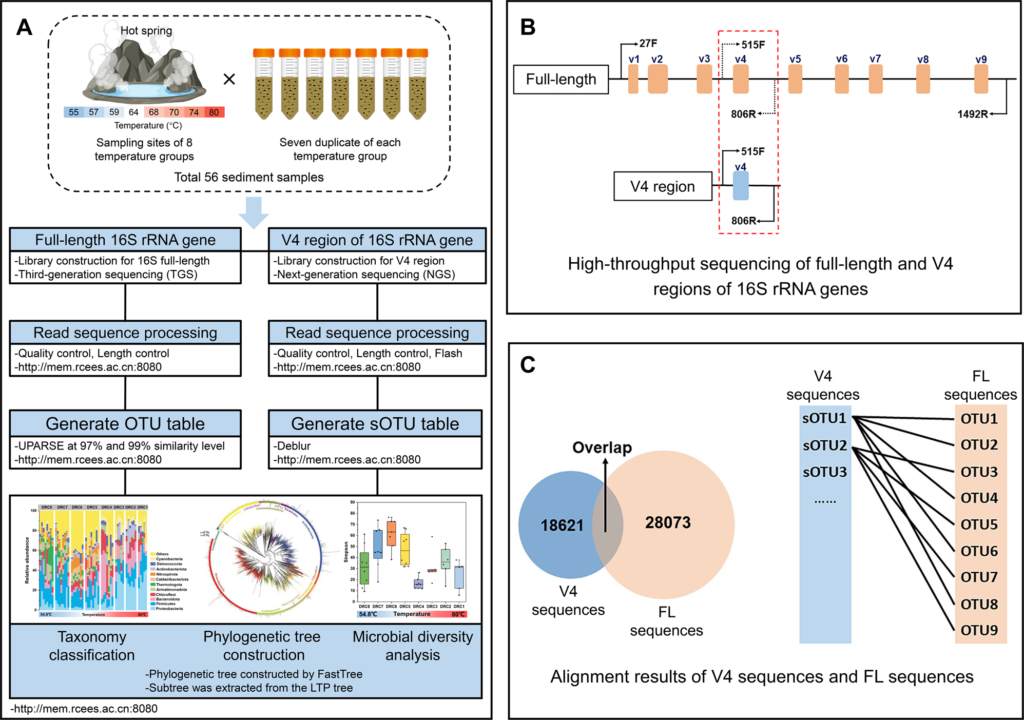
Conservation Challenges and Strategies
Hot springs face various conservation challenges, and it is crucial to implement strategies to protect these sensitive ecosystems and ensure their long-term survival.
Threats to hot springs
Hot springs are at risk from various threats, including habitat destruction, pollution, invasive species, and climate change. Human activities, such as unsustainable tourism, geothermal energy extraction, or the introduction of non-native species, can disrupt the delicate balance of hot springs and harm their biodiversity. Additionally, climate change poses a significant threat to hot springs, as rising temperatures and altered precipitation patterns can affect the availability and stability of these ecosystems.
Protecting sensitive ecosystems
To ensure the conservation of hot springs, it is vital to establish protected areas and implement sustainable management practices. These protected areas can provide a refuge for endemic species and preserve the natural habitats of hot springs. Furthermore, promoting responsible tourism and educating visitors about the ecological significance of hot springs can help minimize disturbances and reduce the negative impact on these delicate ecosystems. Collaborative efforts between scientists, conservation organizations, and local communities are essential to effectively protect and manage hot springs.
Research and Future Directions
Continued research in the field of hot springs is crucial to deepen our understanding of these unique ecosystems and address emerging challenges.
Advancements in studying hot springs
Advancements in technology and scientific techniques have led to significant progress in the study of hot springs. From DNA sequencing to isotopic analysis, researchers have been able to uncover new insights into the microbial communities, biogeochemical cycling, and adaptations of organisms in hot springs. Ongoing research in this field will help shed light on the intricate relationships and processes that occur within hot springs and contribute to the broader field of ecology and evolutionary biology.
Understanding climate change effects
Hot springs are particularly vulnerable to the effects of climate change, making it essential to study and understand the impacts on these ecosystems. Research efforts should focus on predicting how changing climate parameters, such as rising temperatures and altered precipitation patterns, will affect the biodiversity, distribution, and functioning of hot springs. By identifying potential threats and developing adaptive management strategies, scientists can help safeguard these unique environments and the valuable biodiversity they support.
In conclusion, hot springs are not only captivating natural wonders but also serve as crucial ecosystems that support a diverse range of specialized organisms. Their physical characteristics, such as temperature, mineral content, and flow rate, create a challenging yet unique habitat for organisms to thrive. Hot springs contribute to biodiversity through biotic interactions, provide refuge for threatened species, and harbor extraordinary microbial life. These ecosystems offer essential ecosystem services, such as nutrient cycling and water filtration. However, hot springs face conservation challenges, including habitat destruction and climate change. With continued research and the implementation of effective conservation strategies, we can strive to protect and preserve these unique environments for future generations.
